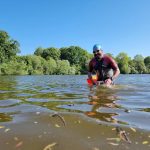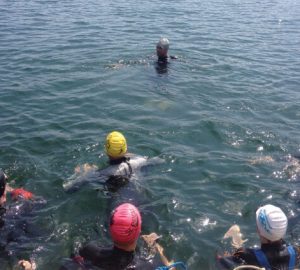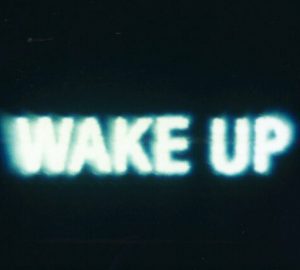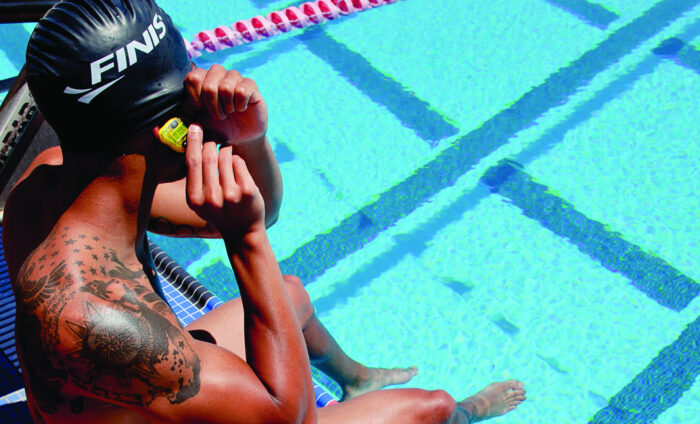
Get a Rhythm
Optimising a swimmer’s stroke rate is one of the most effective ways to improve sustainable speed for distance freestyle swimming. As a coach, I see many experienced and intermediate swimmers (and triathletes) who have reached a plateau in their swim improvement despite investing hours of training and drills to improve swim technique. By helping an athlete understand the importance of rhythm in their stroke, balanced with stroke length determined by their physiology and ‘ape index’, we can begin the process of conditioning the swimmer to maintain their optimal stroke rate for their event distances. Within three to six months most swimmers can improve their conditioning to maintain their optimal stroke rate for distance freestyle, open water events or triathlon.
We previously looked at how to use the FINIS Tempo Trainer in Mode 1 to help with pace judgement. In this article we look at using it in Mode 3 to help us train at optimum stroke rate.
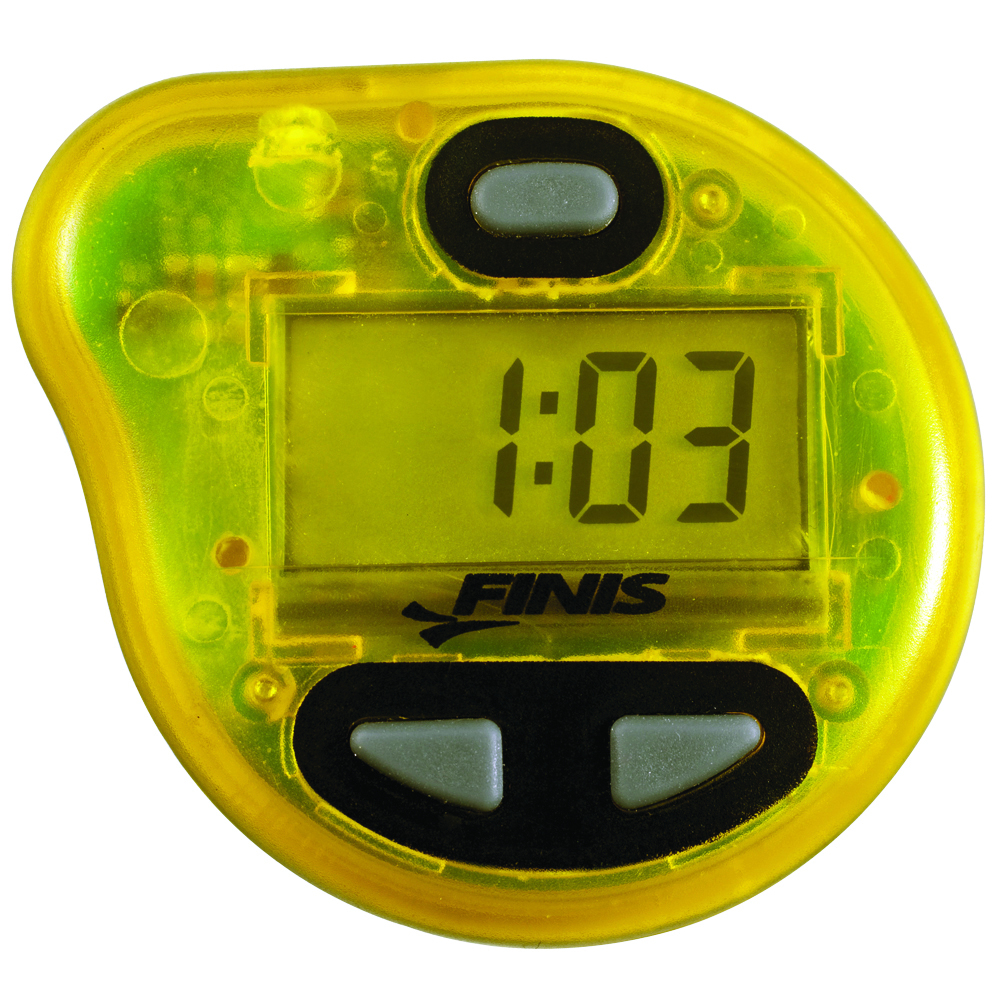
In Mode 3, the display will show you Strokes per Minute (SPM) and you can increase or decrease the display and beeps per stroke by using the left and right buttons beneath the display. You’ll need to know your Base Stroke Rate (BSR) in order to use the device in Stroke Rate mode. If you have attended a Swim Smooth video analysis workshop, 1-2-1 session or clinic, this will have been a key part of your feedback. To measure your BSR yourself, have a friend, training buddy or coach measure your natural stroke rate rhythm (BSR) as you swim 200m at tempo pace (slightly below your threshold or race pace). Steady does it!
To profile your stroke rate rhythm and identify where you are most efficient, capture the following data: stroke rate, strokes per length, duration, Rating of Perceived Exertion (RPE) and individual feedback on stroke mechanics as you progress through the profiling exercise described in Session 1. You will need to work with a friend, training buddy or coach to do this session and ensure you capture the data objectively using a stopwatch as you focus on maintaining the stroke rate for each stage using the tempo trainer tucked into your swim cap behind your ear or hooked onto your swim goggle strap.
Using the data from the profiling, note how much your speed increases stage by stage before reaching a plateau for a few stages and then starts to decrease as your stroke technique unravels. Highlight the ‘turn point’ where you appear to have gone significantly faster from one stage to another. This is likely to be your most efficient stroke rate rhythm, if you were conditioned to maintain it for longer distances. Cue the Finis Tempo Trainer as a super useful training tool for the next few months as you gradually work towards improving your conditioning to optimise your stroke rate. If you are swimming three to five times per week you can increase your stroke rate by 3-5 SPM every four weeks, using the tempo trainer in Mode 3 to keep you on the adjusted rhythm during your main sets. Remain at each level of progression until you are well conditioned on longer sets (400m-1000m) at the new stroke rate and able to maintain integrity in the stroke. An optimal stroke rate is not about shortening or compromising the stroke technique. If you are swimming less than three times per week you will need to progress 2-3 SPM every six to eight weeks using the same guidance.
Note: strokes per length is not the same as stroke rate. When observing your profiling exercise results from Session 1, note the changes that occur in the column for strokes per length right beside the other data. For swimmers that have tried to use distance per stroke advice to improve their swimming, with limited improvement over the years, this profiling exercise will very clearly illustrate the limitations on long term development of your speed efficiency if increasing distance per stroke is achieved by dropping your stroke rate. Elite level marathon swimmers and triathletes typically maintain 75 -100 SPM for distance events in open water. A low stroke rate at 50-60 SPM or less than one stroke per second is frequently associated with technical flaws such as over rotation, a dead spot instead of catching the water, over reliance on leg kick for propulsion, scissor kicking and limitations in versatility in breathing patterns; all significant limitations for any open water swimmer.
Becoming empowered after identifying your individual optimal stroke rate is the most effective way to ensure your conditioning and preparation for events is tailored to you as an individual, progressive and able to deliver long term gains to your speed. You might only need to fine tune your stroke rate season to season very slightly after performing this profiling again in 12 months’ time. This can be a highly motivating and rewarding swimming project.
Session 1 – Stroke Rate Profiling
Aim: Identify your optimal stroke rate
Warm up: 200-400m easy freestyle, every fourth length BS or drill of choice
Build set: 100m to 200m swimming at tempo pace (slightly slower than threshold or race pace). Observe your stroke rate and measure BSR. Count left and right strokes per minute.
Main set: Stroke rate profiling
Download profiling chart at h2openmagazine.com/assets/site/Stroke-Rate-Profiling.pdf
Swim 2 lengths at each stage. Begin at your BSR minus 3 to 5 SPM.
Capture the data at each stage as outlined in the profiling chart. Continue through the profiling until you ‘fall off’ the stroke rate, and fail to maintain it on the second lap. We are not interested particularly in the maximum stroke rate you achieve, however for many swimmers it is very surprising just how much natural rhythm they have! The outcome is a full profile of your stroke rate rhythm that you can plot on a chart to find your optimum stroke rate.
Cool down: 200m easy swimming using your choice of strokes.
Analyse the results to identify your optimal stroke rate rhythm, noting the pattern of increasing lap times before reaching a plateau followed by a decline in lap times. The turn point is usually obvious if the times are recorded accurately to tenths of seconds. Sometimes there are two turn points. For distance freestyle we are only interested in the first one that occurs on your test.
Post session homework!
Measure your ape index (wingspan – fingertip to fingertip with your arms outstretched – versus your height). A positive ape index (wingspan 2cm-8cm more than your height) will likely see your stroke rate efficiency on the scale of 65-79SPM. An equal ape index will put you somewhere mid-range compared to elite swimmers at 75-85SPM. A negative ape index (wingspan 2cm-8cm less than your height) might see you identifying your stroke rate rhythm in the region of 85-100SPM. Your physiology has a significant influence on how you swim and where your rhythm should be conditioned to be the most effective swimmer you can be.
Session 2 – Stroke Rate conditioning
Aim: improve stroke rate conditioning
Warm up: 4 to6 x 100m FS at BSR +5 sec rest
Build: 4 to 6 x 100m PULL at BSR +10 sec rest
Main set:
400m FS at BSR +2 SPM +60 sec rest
4 to 6 x 50m FS at BSR +6SPM +15 sec rest
200m FS at BRS +4SPM +30 sec rest
400m PULL at BSR +2 SPM +60 sec rest
4 to 6 x 50m PULL at BSR +6SPM +15 sec rest
200m PULL at BRS +4SPM +30 sec rest
Cool down: 200m easy FS, optional use of the tempo trainer or swim on feel and note changes to rhythm.
Total distance: 2600m to 3200m
Session 3 – Lunchtime blast option (30 min version)
Aim: Develop stroke rate efficiency
Warm up: 4 to 6 x 50m FS at BSR +5 sec rest
Build: 4 to 6 x 50m PULL at BSR +10 sec rest
Main set:
200m FS at BSR +2 SPM +60 sec rest
4 to 6 x 25m FS at BSR +6SPM +15 sec rest
200m FS at BRS +4SPM +30 sec rest
200m PULL at BSR +2 SPM +60 sec rest
4 to 6 x 25m PULL at BSR +6SPM +15 sec rest
200m PULL at BRS +4SPM +30 sec rest
Cool down: 200m easy FS
Total distance: 1600m to 1900m
Guidance notes
CSS – Critical Swim Speed.
Effectively training at your threshold pace provides you with significant speed
efficiency gains
Pacing – using the pool clock, your own stopwatch or a
timing device such as a Finis
Tempo Trainer or Wetronome
BB = Bilateral Breathing
UB = Unilateral Breathing
BS = Backstroke
FS = Freestyle or front crawl
BRS = Breaststroke
FLY = Butterfly
PULL = Swimming with a pullbuoy or float between your legs. No kicking.






